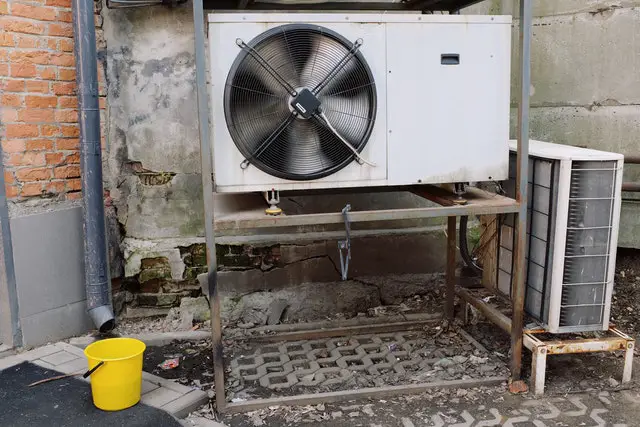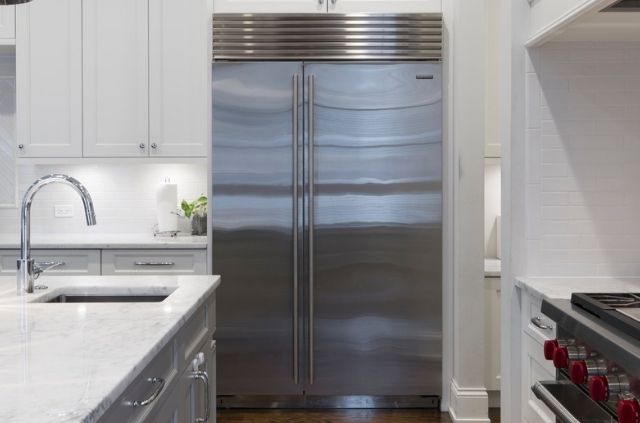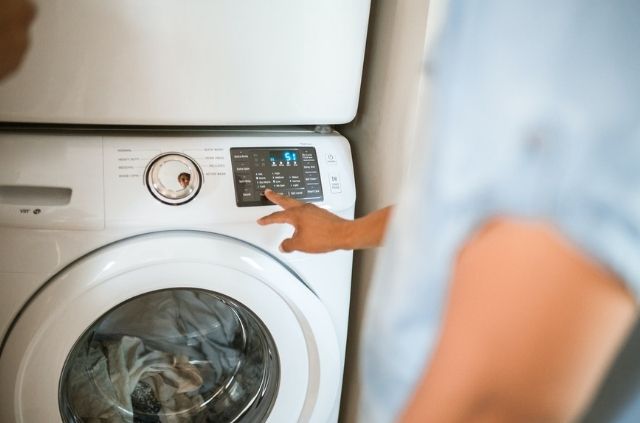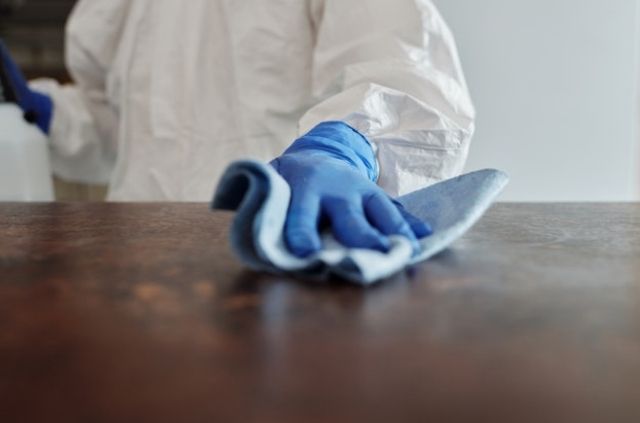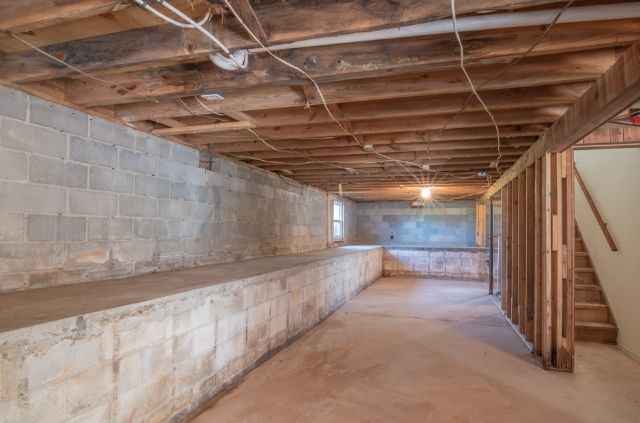Does Mold Grow on Concrete?
Does mold grow on concrete? Yes, mold can grow on all concrete surfaces but it mostly happens inside when the conditions are right. Have you ever walked down into your basement only to notice mold on the concrete floor?
This area of the house is famous for being musty, dark and damp – which is why it’s common for mold to appear on this surface. In this article you will learn all of the steps needed to remove mold from concrete and how to prevent it from coming back in the future.
Why Mold Grows on Concrete
When examining concrete up close you can see that it has many little holes and cracks. This is the ideal surface for mold to start growing. Basements with concrete walls and floors create can create a recipe for disaster, because they are dark, damp and get very little light. Once molds spreads in these areas it needs to be dealt with immediately.
- Areas with high humidity
- Dampness and moisture
- Spaces with no sunlight
Does Bleach Kill Mold on Concrete?
Avoid using bleach to kill mold on concrete as water is the main ingredient in this product. The surface might look clean for a few days, but mold will almost always come back. Water only speeds up the growth of mold. Bleach is also very toxic and it can be dangerous to breathe in, even for short periods of time.
How to Remove Mold from Concrete
In order to effectively remove the mold, you will need a mop, bucket, scrub brush, a spray bottle, and vinegar. Dilute a mixture with 1 cup of vinegar and 3 cups of water. This will deliver enough cleaning power to remove the mold safely.
1. Safety First
The first step to properly removing mold from concrete is making sure you stay safe. The main reason why mold should be removed in the house is that it creates both short and long term health risks. That’s why personal protective equipment should be used at all times, during the mold removal process.
Rubber gloves will be ideal for protecting your hands from any mold getting on them. And a face mask or respirator will keep you from breathing in any airborne mold spores. Finally, make sure to wear long clothing to avoid any mold from landing on your skin during the cleaning process. All of these measures will keep you safe.
2. Spray the Surface
Begin spraying down the concrete once you have the vinegar mixture in a spray bottle. Don’t be afraid to generously apply the vinegar to the entire surface area, in order to avoid leaving any sections dry. If you start the removal process on dry mold, spores will get in the air and land on other surfaces.
Even the smallest amount of mold spores can create growth in the future, as they will still be living in the area. You also want to keep the mold on the ground for safety reasons. Breathing in even a small amount of mold spores can cause respiratory problems. That’s why it’s so vital to wear proper safety equipment.
3. Let it Soak
Let the mixture soak for 5-10 minutes once the vinegar has been sprayed down onto the concrete. Some people try to remove the dust first by sweeping the area clean. However, this method makes things worse in the long run. The dangerous mold spores will quickly spread once they get in the air and create more problem areas.
Allowing the vinegar mixture to dwell will also ensure the mold is completely removed. As we touched on above, concrete has many small cracks and holes on the surface. Mold will find its way into these areas as it spreads. You need to give the cleaning solution enough time so that it enters these tiny areas and finds the mold.
4. Brush and Mop
Once you’ve allowed enough time for the vinegar mixture to dwell, it’s time to remove the mold. Use a brush to scrub the concrete surface in horizontal and vertical motions. This will help agitate the mold at a variety of different angles. If you’re working in a large area, a long handle brush will save your back.
When dealing with stubborn mold, you can always spray more cleaning solution onto the concrete. Once the mold has been successfully scrubbed off, use a mop and bucket to clean up any remaining liquid. This step is really just about removing any leftover vinegar, as you don’t need to use a large amount of water with the mop.
5. Dry the Area
This is arguably one of the most important steps when removing mold from concrete. If you’re working in a basement, use fans or a dehumidifier to make sure the area is completely dry. Any type of excess water is a bad thing and it will lead to more mold if left untreated. Open any doors or windows if possible for better filtration.
As the concrete is drying you can clean any equipment used during the mold removal process. Thoroughly rinse the mop and brush to rid them of any contaminants. It also doesn’t hurt to spray down your wash bucket either. You never want to store any of these tools wet, especially after using them to clean mold.
Preventing Mold on Concrete
Use a Dehumidifier – Buying a high quality dehumidifier is a good investment, especially if you have mold in your basement. This machine will help reduce the level of humidity in the air, that allows mold and mildew to grow in the first place. It will also get rid of that musty smell basements are known for. Spending a couple hundred dollars on a dehumidifier will keep your basement and the rest of your house mold free.
Find the source of the problem – Cleaning and removing mold from a concrete surface is just one step in the equation. If you don’t find where the mold is coming from, it will grow back eventually. Look for any broken pipes that are leaking in your house. Even a small amount of water can produce enough moisture for mold to grow. Also check around the exterior of your home to make sure there’s proper drainage and no water is sneaking inside.
Keep the floors dry – If you have mold in the basement, chances are it could be coming from the floor above. Each time water is spilled on hardwood floors, it will soak into the floorboards. This will create moisture in the floors, which can impact the basement room below. Always wipe down spills in the kitchen and other areas of the house quickly.
Final Thoughts
We began this article by asking a simple question: Does mold grow on concrete? Unfortunately it does, for a number of different reasons. Concrete is a material that has many different pores on the surface. Mold can get inside of these small areas and spread very quickly.
But this type of organic growth only happens if the conditions are just right. There needs to be some level of humidity and moisture for mold to start growing. That’s why this problem is most common in unfinished basements – where the concrete is exposed to an environment suited for mold.
Further Reading
Search Terms
- Does mold grow on concrete?
- How to remove mold on concrete

